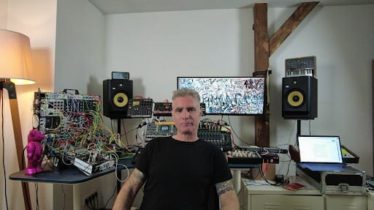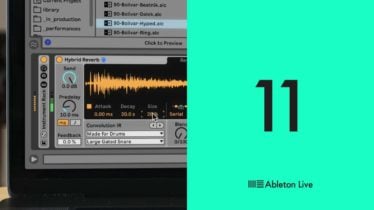What is house music?
What is house music? History, origins, and production tips
If you’re not already familiar with house music, it’s likely that you’ve heard it before without knowing. Four on the floor kick drums, swinging hi-hats, gospel-cut vocal samples, bouncy chord progressions, and funk-inflected bass lines are all integral to the unique identity of the genre. While there is no concrete definition of house music, there are several characteristics we’ll teach you that make it instantly recognizable.
It’s a genre that has made its way around the world throughout various phases of club culture. The house sound has even left its mark on other genres, such as pop, hip-hop, and indie rock. Because it’s such a repetitive style of music, once you get the basic formula down, it’s not too difficult to replicate. In fact, the genre thrives on repetition. It’s the subtleties in between that make certain tracks stand out.
In this post, we are going to show you how to get started with house music production. Many new students struggle at the beginning, but these methods are guaranteed to make it easier for anyone. But before getting into how to produce within the genre, let’s take a look at the origins of house music and how it came to be the diverse dance genre we know and love today.
House music origins
Where did house music start? The history of house music traces back to the late 1970s, deep in the underground clubs of Chicago — and later New York — as DJs began blending genres of dance music into a more mechanical formula with distinct, deep bass lines. It is often said that house music rose from the ashes of disco. DJs moving beyond the disco culture began to experiment with new mixing techniques and rhythmic variations that eventually became house.
Historic nightclubs such as Chicago’s “Warehouse” and New York’s “Paradise Garage” served as mainstays for a majority Black, Latino, and LGBT crowd. The house scene was viewed as a haven for these marginalized communities. Inclusivity and equality are the core of house music’s origins.
Built by Black artists, Frankie Knuckles is widely regarded as the “Godfather of House Music.” Other seminal Black innovators such as DJ Ron Hardy and Larry Levan helped lead the way in the early days of house. In this era, it wasn’t uncommon for DJs to lack basic equipment like turntables with varying speeds or even mixers. As a result of their limitations, pioneers like Frankie Knuckles would remix songs using a reel-to-reel tape machine, adding unique breakdowns to the mix.
This evolution of dance music allowed house music to flourish in underground clubs, but it also began the spawn of different subgenres of house music.
The different types of house music
Led by Larry Heard, Deep house originated via the fusion of Chicago house elements with inflections of jazz, funk, and soul music. Characterized by the use of Roland’s legendary TR-909 drum machine, soft keyboard pads, ambient mixes, and complex chord progressions, the subgenre emerged as a slower, more liquid, and stylish version of house.
Acid house followed with its unique emphasis on the “squelching” sound of the Roland TB-303 electronic synthesizer-sequencer. It was popularized by DJ Pierre and helped bring house music to a worldwide audience, and its influence spread to other dance genres such as jungle, techno, and trip-hop.
House took off in the late 80s from underground to mainstream outside of the United States as Farley “Jackmaster” Funk’s “Love Can’t Turn Around” peaked at #10 in the UK singles chart. Eventually, the UK became a hot spot for the genre, as it spread across the world within the realm of dance music.
More subgenres began to emerge as the genre rose in popularity. In the last decade, new takes on house such as electro swing, future house, tropical house, lo-fi house, and more have become prominent interpretations of the genre today.
How to make house music
When it comes to making a house beat in Ableton (or any DAW), there are several core elements and guidelines that you can follow and utilize. By combining these tried and true methods, you will unlock several house music production secrets. However, as with any piece of music, experimenting with your own original interpretations is key to finding your own sound, and potentially creating the next subgenre of house.
Tempo
- First, set your BPM to somewhere along with the 115 – 130 BPM range. Typically, the sweet spot is around 125 BPM, but it will depend on which subgenre of house you are going for. While other genres of music have more flexibility when it comes to BPM, the four on the floor nature of house music means keeping the BPM in a tight realm is key. From there, it’s time to create your house drum rack.
Drums
- The Roland TR-909 is king when it comes to the history of house music. This will be a good sample source to draw from as you begin selecting your kick, hi-hats, claps, rides, snares, shakers, and more into your Ableton house drum rack. When you begin building your beat, the most important place to begin is with your hi-hat pattern. You’ll want to start with a closed hi-hat and an open hi-hat.
- Create a groove that has sixteenth note relationships. There should be multiple instances where your hi-hats are separated by a division of a sixteenth note. Then, go into Ableton’s groove pool, select a nice swing groove, and apply it to your hi-hats. Without a swing, the pattern won’t have that signature house feel.
- Then, add in your kick drum, which will simply just be a four on the floor pattern. Your kick and hi-hat will be the foundation of your beat. Everything else you add — claps, snares, various percussion — will be supportive. But like any good house track, the first thing you hear drum-wise is almost always a dancy kick and hi-hat pattern that gets the groove building.
Vocal samples
- One of the best house music production tips is to find a powerful vocal sample that will help bring your track to life. Typically, a good gospel vocal sample will work.
- You can apply some pitch-bending to the vocal, but generally, house music does not feature heavily processed vocals. Because of this, you will want to spend the majority of your time finding the right vocal sample, since you’ll mostly only be treating it with minimal effects like delay and reverb.
Chords
- To make your own house music, you will want a good rhythmic pattern with your chords. The chord progression can be as simple as just using a few Minor seventh and Major seventh chords. Deep house producers often use Add 9 variations to give their chord progressions a jazzier feel. In many cases, less is more when it comes to your progression.
- Set them to delay on a return track in order to retain the power of all of your sounds while also getting effects in there. Having that small amount of delay will help give your chords more of a bounce and sense of spatial depth within the mix.
- While many house songs feature short, staccato chord stabs, using sustained chords can create a more dramatic and ambient slow-build effect. It depends on the subgenre of house you’re creating and the overall feel you want for your track.
Bassline
- For a classic bass line, a great house music production technique is to mirror your bass with your chord stabs. In other words, your bass would be hitting the same rhythmic pattern as your chords, and it should have a similar staccato tightness to it.
- By mirroring your chords and bass, you can drop either of them out at any moment and the track will continue the same groove. The two work in tandem with one another, and at some point in the track, you will want to drop out the chords and just let the bass rock, and vice versa.
- On the other hand, applying syncopation between your chords and bass line can be a great tool to add a unique rhythmic movement.
General house music production tips
- An incredibly simplistic element to give your track that extra sense of color and depth is to add a sustained string track. It can be just one note: a root note, a fifth, a third, whichever sounds best to you. Adding that sustained note will give you more of a classic house sound.
- Another tip to help your track jump a bit more is to add in a syncopated snare later in your beat to add new rhythmic variations. Be sure to add the same or similar swing settings to your snare as your hi-hats. You want the whole track to work cohesively together as one unit.
- Only use one oscillator on your bass. Choose a square wave, roll your cutoff way down, turn up your resonance, and add some envelope activity. This will give you a stab-y and powerful bassline. If you use more than one oscillator, they will begin to phase, and you will get little moments of phase cancellation, where the low end gets lost.
- When it comes to arrangement, variation is key. Once you’ve created a strong foundation of drums, chords, bass, vocals, and various samples, you can flesh out the track simply by duplicating your main loop several times, adding in parts slowly, dropping things out, and bringing them back in varying orders. The secret is good pacing and never letting one sound get too repetitive.
Conclusion
House music has been evolving for several decades, and its prominent role in dance music does not seem to be fading any time soon. As you open your DAW and begin to explore different types of house music, remember these techniques. Hopefully, they will provide you with the basics on how to make house music for beginners and more advanced producers.
What are your thoughts on house music, its history, and the best production tips for making a powerful house track?


